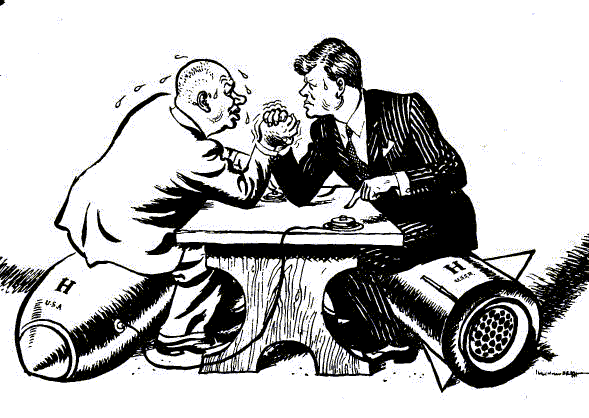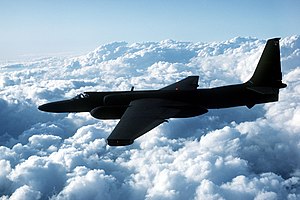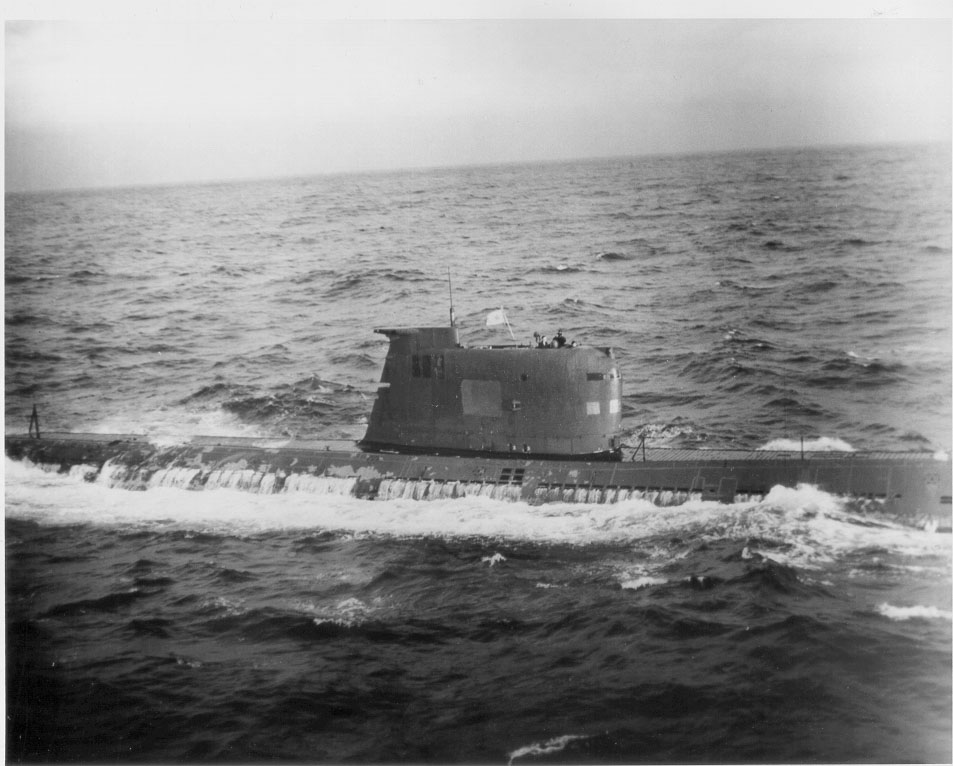Near Misses of Nuclear War
The Cold War is known for the tensions existing between the two world superpowers, the U.S and USSR, and the high stakes made the strain even worse. Not only were the two nations fighting for their respective ideologies, but they were also struggling for their own security. This security, however, was tested during the Cold War as nuclear war almost erupted on numerous occasions.
The most widely known incident is the Cuban Missile Crisis where the Soviet Union began building nuclear missiles in Cuba, just 90 miles off of Florida. Naturally, the threat of nuclear war alarmed Americans, but the proximity of the missiles instilled great fear because they would be able to reach the mainland in a matter of minutes. Faced with a decision to either take military action against Cuba or diplomatic talks with the Soviet Union, President Kennedy chose the latter and eventually defused the situation by negotiating with Nikita Khrushchev. In the end, it was agreed that the Soviet Union would remove its missiles from Cuba if the United States moved its missiles out of Turkey. While the details of this deal were fulfilled by both sides, President Kennedy only revealed the first part of this agreement and hid the plan to remove U.S missiles from Turkey in order to appear as the victor of the standoff in the eyes of the public.
At the same time as the Cuban Missile Crisis, a lesser-known crisis almost eventuated in nuclear war. This time, however, instead of the Soviets being the instigators, it was the Americans. It all began when a U-2 spy plane departed from Alaska and flew around the North Pole in order to complete a routine surveillance mission. The pilot would have navigated by using the stars as a guide, but the northern lights in the region obscured his natural road-map. The pilot’s mission quickly went wrong as he lost his bearings and traveled into Soviet airspace. Given the context of the situation and the tensions between the two nations, the Soviet Union interpreted this violation of air space as a nuclear threat, and they sent planes out to destroy the spy plane. In response, the United States sent out their own planes carrying nuclear missiles to protect the U-2 pilot. Luckily, no conflicts arose between these planes, and nuclear war was narrowly avoided.
With nuclear weapons having the potential to kill hundreds of thousands, if not millions, of people in a single blast, we should recognize the need for diplomatic actions and a cool head in order to diffuse even the most tense situations. All of these close calls serve as a reminder to the possibility of mutually assured destruction, and I hope lessons can be learned to prevent such crises from ever happening again.
Sources:
Cuban Missile Crisis
5 Cold War Close Calls



No comments:
Post a Comment